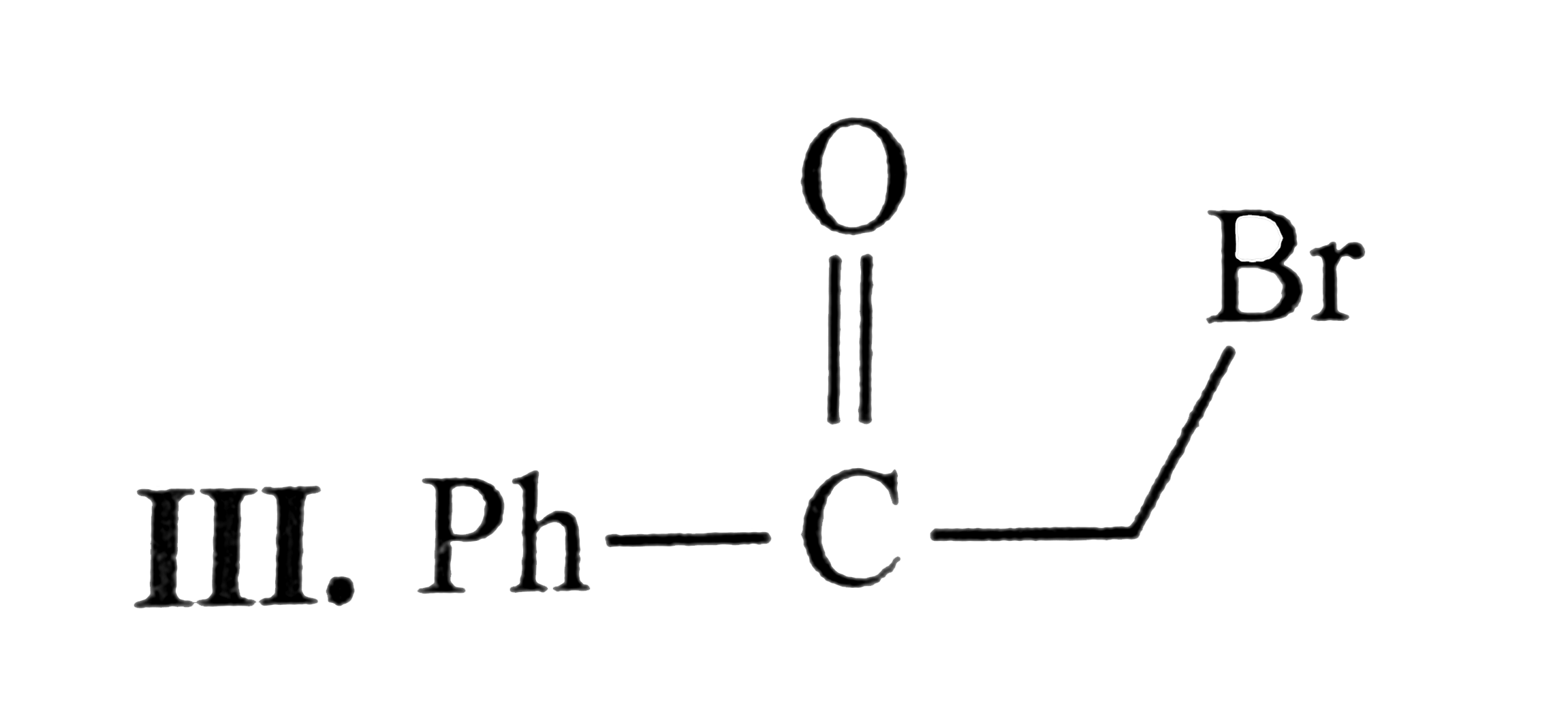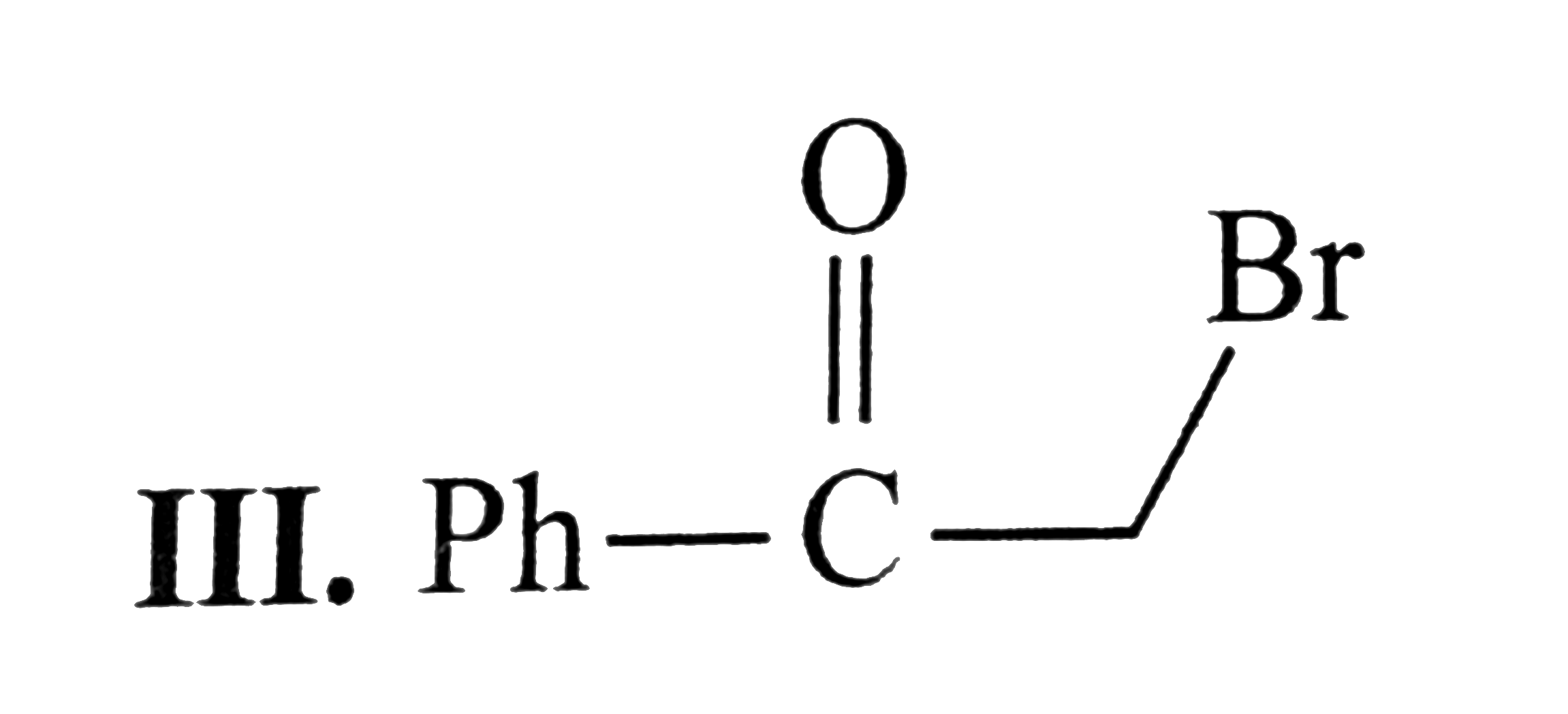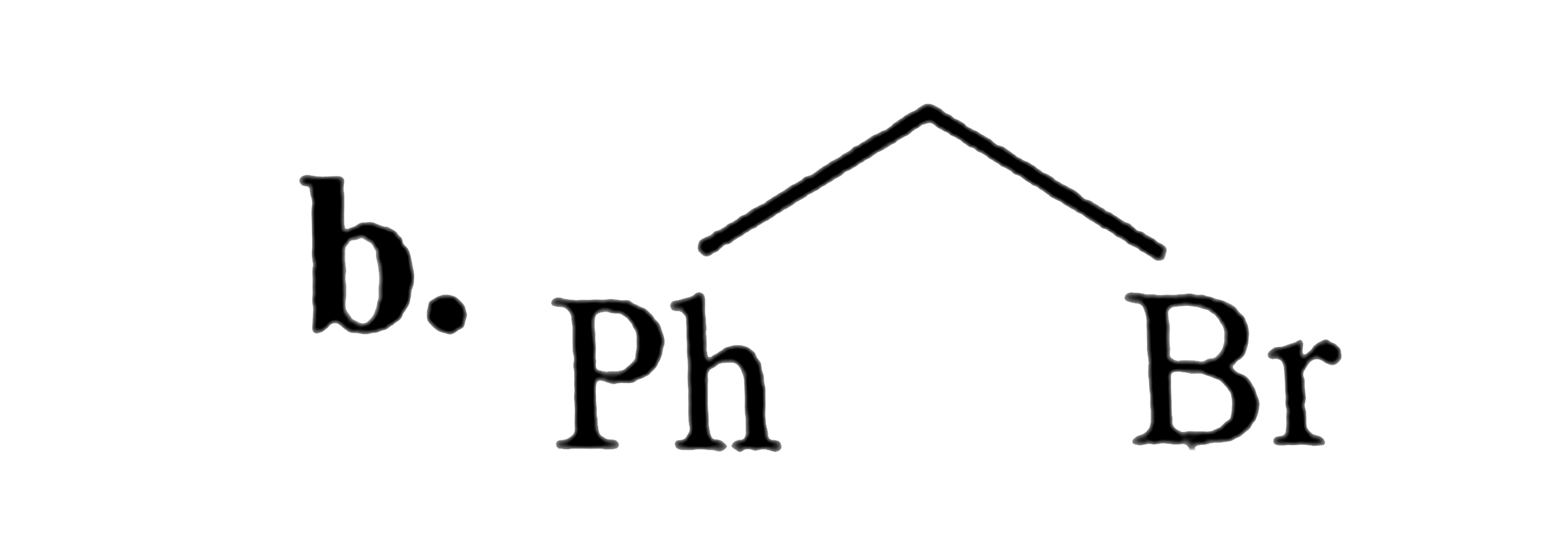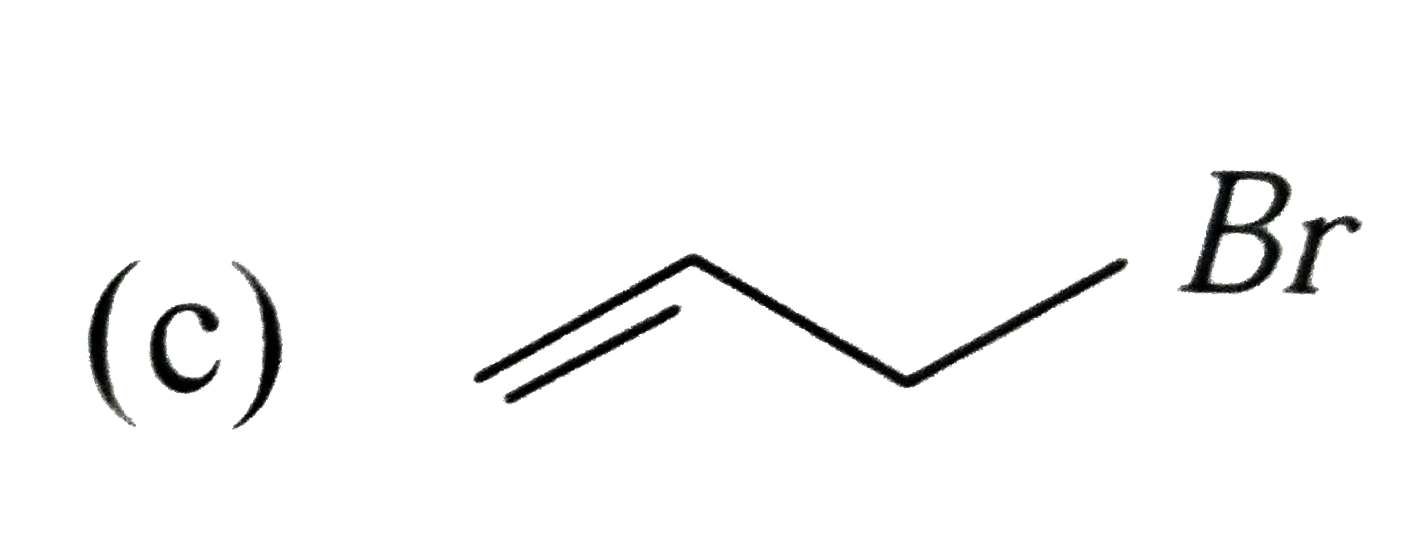SN2 reaction is a bimolecular reaction which takes places by the formation of T.S. Veolcity of the reaction depends on the concentration of the substrate as well as the nucleophile.
The reaction is favoureed by strong Nuo− and in the presence of polar aprotic sovlent, optically active halides give. Walken inversion by SN2 mechanism. The presence of hero group (atom) at β−C atom, unsaturation at β−C and ⎛⎜
⎜⎝−O∣∣C−⎞⎟
⎟⎠ group at α−C atomn favor SN2 mechanism.
Allyl halides and benzyl halides give SN1 and SN2 reactions. Allyl halides alos give SN2 mechanism EDG at ortho- and para- postions in benzyl halides favors SN1 mechanism, wheras EWG favors SN2 mechanism.
Which of the following will gives SN2 mechanism gt
EtBr


All
The correct Answer is:d
(a)⇒1∘RX,(b)⇒3∘, allyl halide
(c) implies allyl halide.
Topper's Solved these Questions
- AROMATIC COMPOUNDS AND ALKYL AND ARYL HALIDES BOOK - CENGAGE CHEMISTRYCHAPTER - AROMATIC COMPOUNDS AND ALKYL AND ARYL HALIDES EXERCISE - Exercises Multiple Correct
35 Videos
- AROMATIC COMPOUNDS AND ALKYL AND ARYL HALIDES BOOK - CENGAGE CHEMISTRYCHAPTER - AROMATIC COMPOUNDS AND ALKYL AND ARYL HALIDES EXERCISE - Exercises Multiple Correct Answers Type
12 Videos
- AROMATIC COMPOUNDS AND ALKYL AND ARYL HALIDES BOOK - CENGAGE CHEMISTRYCHAPTER - AROMATIC COMPOUNDS AND ALKYL AND ARYL HALIDES EXERCISE - Exercises Linked Compreshension Type
11 Videos
- APPENDIX INORGANIC VOLUME 2BOOK - CENGAGE CHEMISTRYCHAPTER - APPENDIX INORGANIC VOLUME 2EXERCISE - Short Answer Type
179 Videos
- BIOMOLECULESBOOK - CENGAGE CHEMISTRYCHAPTER - BIOMOLECULESEXERCISE - Exercises Archives (Analytical And Descriptive)
8 Videos
Similar Questions
SN2 reaction is a bimolecular reaction which takes places by the formation of T.S. Veolcity of the reaction depends on the concentration of the substrate as well as the nucleophile.
The reaction is favoureed by strong Nuo− and in the presence of polar aprotic sovlent, optically active halides give. Walken inversion by SN2 mechanism. The presence of hero group (atom) at β−C atom, unsaturation at β−C and ⎛⎜ ⎜⎝−O∣∣C−⎞⎟ ⎟⎠ group at α−C atomn favor SN2 mechanism.
Allyl halides and benzyl halides give SN1 and SN2 reactions. Allyl halides alos give SN2 mechanism EDG at ortho- and para- postions in benzyl halides favors SN1 mechanism, wheras EWG favors SN2 mechanism.
Which of the following will give SN1 reaction?
View SolutionSN2 reaction is a bimolecular reaction which takes places by the formation of T.S. Veolcity of the reaction depends on the concentration of the substrate as well as the nucleophile.
The reaction is favoureed by strong Nuo− and in the presence of polar aprotic sovlent, optically active halides give. Walken inversion by SN2 mechanism. The presence of hero group (atom) at β−C atom, unsaturation at β−C and ⎛⎜ ⎜⎝−O∣∣C−⎞⎟ ⎟⎠ group at α−C atomn favor SN2 mechanism.
Allyl halides and benzyl halides give SN1 and SN2 reactions. Allyl halides alos give SN2 mechanism EDG at ortho- and para- postions in benzyl halides favors SN1 mechanism, wheras EWG favors SN2 mechanism.
Which of the following will give Walden inversion ?
View Solution
Knowledge Check
SN2 reaction is a bimolecular reaction which takes places by the formation of T.S. Veolcity of the reaction depends on the concentration of the substrate as well as the nucleophile.
The reaction is favoureed by strong Nuo− and in the presence of polar aprotic sovlent, optically active halides give. Walken inversion by SN2 mechanism. The presence of hero group (atom) at β−C atom, unsaturation at β−C and ⎛⎜ ⎜⎝−O∣∣C−⎞⎟ ⎟⎠ group at α−C atomn favor SN2 mechanism.
Allyl halides and benzyl halides give SN1 and SN2 reactions. Allyl halides alos give SN2 mechanism EDG at ortho- and para- postions in benzyl halides favors SN1 mechanism, wheras EWG favors SN2 mechanism.
Which of the following will give SN1 reaction?A B
B C
C DAll
DAllSN2 reaction is a bimolecular reaction which takes places by the formation of T.S. Veolcity of the reaction depends on the concentration of the substrate as well as the nucleophile.
The reaction is favoureed by strong Nuo− and in the presence of polar aprotic sovlent, optically active halides give. Walken inversion by SN2 mechanism. The presence of hero group (atom) at β−C atom, unsaturation at β−C and ⎛⎜ ⎜⎝−O∣∣C−⎞⎟ ⎟⎠ group at α−C atomn favor SN2 mechanism.
Allyl halides and benzyl halides give SN1 and SN2 reactions. Allyl halides alos give SN2 mechanism EDG at ortho- and para- postions in benzyl halides favors SN1 mechanism, wheras EWG favors SN2 mechanism.
Which of the following will give Walden inversion ?AC4H9−CHD−Br,B C
C DAll
DAllVelocity of the SN2 reaction depends on the concentration of the substrate as well as te nucleophile.
The reaction is favoured by strong Nu..ө, and in the presence of polar aprotic solvent, optically active halides give walden inversion by SN2 mechanism. the presence of hetro group (atom as β−C atom, unsaturation at β−C, and ⎛⎜ ⎜⎝−O∣∣C−⎞⎟ ⎟⎠ Allyl halides also give SN2 mechanism. EDG at ortho-and para-positions in benzyl halides favours SN1 mechanism, whereas EWG favours SN2 mechanism.
Q. Which of the following will give Walden inversionAC4H9−CHD−BrB C
C DAll of these
DAll of these
Walden inversion takes place in SN2 reaction.
Half-life period of SN2 reaction is inversely proportional to the concentration of the substrate or nucleophile or both.
View SolutionAssertion (A): SN2 reaction is carried out in the presence of polar aprotic solvent.
Reason (R): Polar aprotic solvents do not contain acidic hydrogen.
View SolutionVelocity of the SN2 reaction depends on the concentration of the substrate as well as te nucleophile.
The reaction is favoured by strong Nu..ө, and in the presence of polar aprotic solvent, optically active halides give walden inversion by SN2 mechanism. the presence of hetro group (atom as β−C atom, unsaturation at β−C, and ⎛⎜ ⎜⎝−O∣∣C−⎞⎟ ⎟⎠ Allyl halides also give SN2 mechanism. EDG at ortho-and para-positions in benzyl halides favours SN1 mechanism, whereas EWG favours SN2 mechanism.
Q. Which of the following will give SN2 mechanism
View SolutionWalden inversion takes place in SN2 reaction.
Half-life period of SN2 reaction is inversely proportional to the concentration of the substrate or nucleophile or both.
View SolutionAssertion (A): SN^(2)reactioniscarriedout∈thepresenceofpolaraproticsolvent.<br>Reason(R): Polar aprotic solvents do not contain acidic hydrogen.
View Solution
